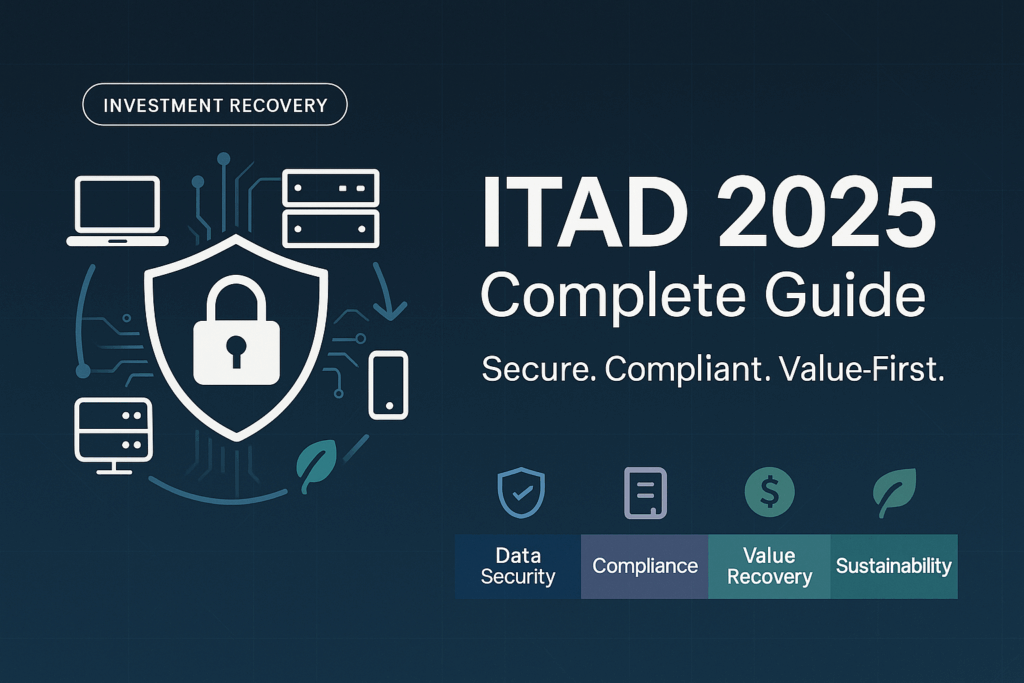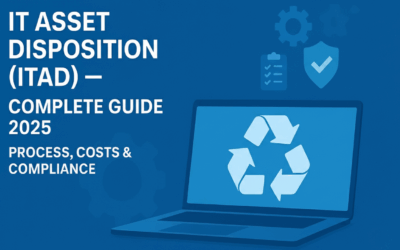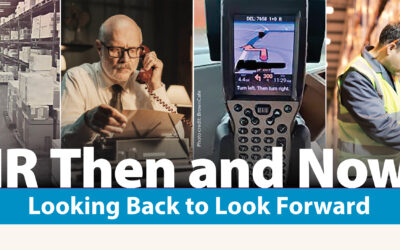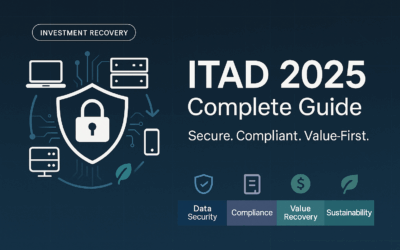
The Complete Guide to ITAD: What IT Asset Disposition Means for Your Business in 2025
The Complete Guide to ITAD: Understanding IT Asset Disposition in 2025
For organizations that buy, sell, or manage surplus assets, IT asset disposition (ITAD) is increasingly viewed as a structured process rather than a secondary task. Within the field of Investment Recovery (IR), ITAD is often discussed in terms of managing potential risks (such as data security and compliance), identifying opportunities for value recovery (such as resale or redeployment), and supporting sustainability goals (through recycling and reuse).
Why ITAD may matter more in 2025
-
E-waste trends
According to the United Nations’ Global E-waste Monitor 2024, the world generated about 62 billion kilograms of e-waste in 2022, while only an estimated 22.3% was formally collected and recycled. E-waste volumes are reported to be growing more quickly than recycling infrastructure, which some organizations view as a potential business and reputational risk. -
Global trade rules
As of January 1, 2025, cross-border shipments of both hazardous and non-hazardous e-waste are included under the Basel Convention’s Prior Informed Consent (PIC) procedure. Companies engaging in international movements of used equipment or e-waste may need to review chain-of-custody and documentation practices in line with new Annex codes. -
Privacy and data retention
U.S. state-level privacy laws, such as California’s CPRA, include provisions around data retention and deletion once data is no longer required. This may increase the importance of auditable media sanitization within ITAD programs.
What ITAD is (and how it relates to Investment Recovery)
IT Asset Disposition generally refers to the processes for retiring technology assets in a way that may reduce risk and capture value where possible. In practice, this can involve:
-
Inventorying retired endpoints (e.g., laptops, servers, phones).
-
Exploring redeployment or resale before recycling.
-
Implementing standardized data sanitization.
-
Maintaining records that may support audit, ESG, and finance reporting.
The 2025 ITAD playbook (illustrative framework)
Build a complete IT asset inventory
Tie surplus lists to ITSM/CMDB exports.
Capture details such as make, model, condition, storage type, and encryption status.
Flag assets that may store protected data.
Determine disposition path with a value-first hierarchy
Redeploy internally where feasible.
Resell through certified partners or marketplaces.
Harvest components that may retain value.
Recycle responsibly once value options are exhausted.
Sanitize data with reference to standards
NIST SP 800-88 Rev. 1 is a widely cited framework for media sanitization, including Clear, Purge, and Destroy methods.
Require serial-level verification reports when possible.
Work with certified ITAD partners
Certifications such as R2v3 or e-Stewards v4.1 may provide assurance of environmental, data, and downstream handling practices.
Confirm scope statements and updates for Basel 2025 amendments.
Maintain chain-of-custody
Event logs, serialized tracking, secure transport, and certificates of sanitization/recycling may help demonstrate compliance.
Consider compliance and reporting needs
Basel PIC documentation for cross-border shipments.
Privacy and retention evidence for state-level laws.
ESG metrics such as reuse rate, diversion rate, or resale proceeds.
Special considerations by asset class
-
Laptops & phones: Often retain resale value; may require OEM-aware wiping methods and careful handling of batteries.
-
Servers & storage: Encryption status and RAID breakdowns may influence sanitization.
-
Networking gear: May have resale demand if configurations are reset.
-
Legacy displays/CRTs: Still regulated under U.S. RCRA rules; downstream glass handling remains critical.
Cross-border shipments post-Basel 2025
Questions organizations may need to ask when exporting used equipment:
-
Is the equipment classified as e-waste or intended for direct reuse?
-
If e-waste, does it fall under hazardous (A1181) or other (Y49) categories?
-
Have all Prior Informed Consent procedures and documentation been prepared and approved?
Note: The United States is not a Basel Convention Party, but many trade partners are. Importing country requirements typically apply regardless of U.S. positions.
Measuring ITAD performance
Organizations sometimes measure ITAD programs by combining financial, compliance, and sustainability perspectives. Possible indicators include:
-
Revenue from resale or redeployment savings.
-
Costs avoided (e.g., storage, disposal).
-
Documentation of audit closures or compliance alignment.
-
Sustainability-related metrics such as diversion rate or reuse rate.
A sample 90-day ITAD roadmap (for discussion purposes only)
-
Days 1–30: Map inventory sources and agree on data sanitization standards (e.g., NIST 800-88).
-
Days 31–60: Engage or review ITAD partners; pilot limited asset classes.
-
Days 61–90: Scale policies, publish procedures, and prepare for Basel 2025 documentation if exports are planned.
Common challenges
-
Destroying resale value by defaulting to shredding.
-
Accepting certificates without serial-level verification.
-
Assuming certification without verifying scope coverage.
-
Overlooking cross-border regulatory requirements.
Role of the Investment Recovery community
The Investment Recovery Association provides forums for education, peer sharing, and connection with vetted partners. Resources such as conferences, webinars, and certification programs may help organizations benchmark or refine their ITAD approaches.
Key takeaway
In 2025, ITAD is often positioned as more than just a technical task. For many organizations, it represents a mix of data protection, value recovery, compliance evidence, and sustainability reporting. Approaching ITAD through an Investment Recovery lens may help organizations better align with evolving expectations.
Disclaimer
This content is provided for informational purposes only and does not constitute professional, legal, financial, or compliance advice. Organizations should consult qualified advisors when making decisions related to ITAD policies, data security, or regulatory compliance.


